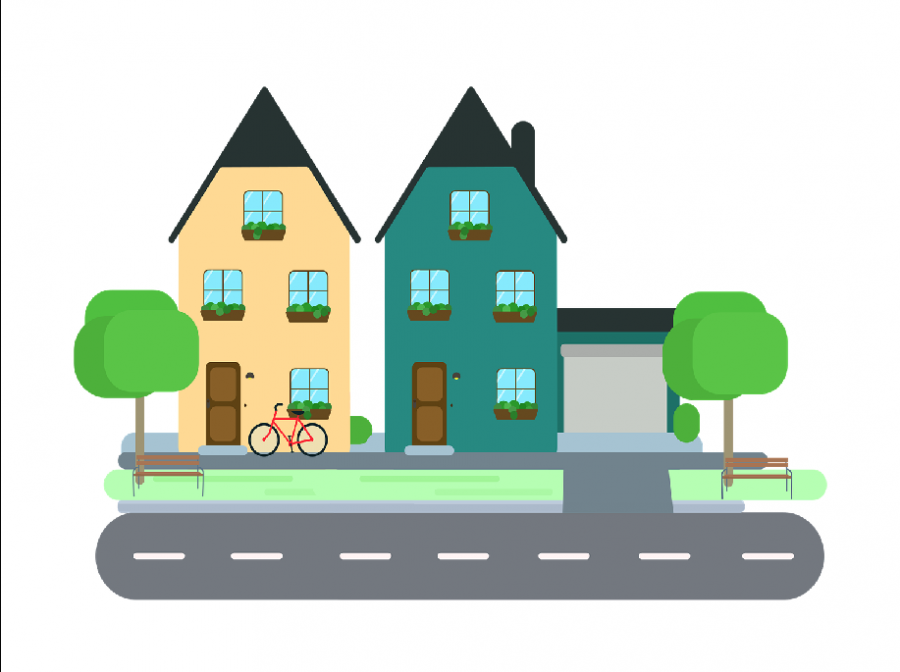Biking to class relieves stress, improves time management
By biking to class, students can save money on gas and a parking pass. Students can also get an adequate workout from biking and relieve stress.
March 1, 2017
Students living off campus have a choice in their morning commute to school: they can drive and find a parking spot, or choose to walk or bike to class.
Because commuter lots are typically full during the weekdays, some upperclassmen choose the latter as a means to either get outdoors, save the trouble of finding a parking spot or simply because they don’t have a vehicle.
According to South Dakota State Wellness Director Mariah Weber, biking to campus can be a healthy alternative to driving that is not physically strenuous.
“It’s going to be lower impact; it’s not nearly as hard on your joints as running or walking would be and just any cardio activity is going to reduce your chances of heart disease and stroke by about half,” Weber said.
The City of Brookings is promoting a more bike-friendly atmosphere for pedestrians, according to Justin Parks, the SDSU Outdoor Programs Coordinator. Parks claims the city is moving toward a national gold ranking in biker-friendliness.
“The Brookings Bicycle Advisory Committee is trying to find ways to move us all the way up to the gold standard,” Parks said. “It would be through trails, bike lanes and added perks for cyclists that goes into having stations set up across the city for people to park their bikes [and] for people to do minor maintenance.”
One junior mechanical engineering student, Seth Jackson, commutes from his off-campus apartment every day. Jackson owns a car, but chooses to bike.
“It’s just easier, I didn’t want to pay for a parking permit and look for a parking spot every morning, and I just like being outside and being on my bike,” Jackson said. “It‘s definitely nice to be outside and get exercise because otherwise I wouldn’t get any exercise.”According to Weber, Jackson very well could be getting an adequate workout just by biking to and from class.
“Exercise can be broken up into increments, so you don’t have to do, say 30 minutes all at once, you can do ten minutes here, ten minutes there and ten minutes somewhere else,” Weber said.
Aside from a parking pass, there are other financial and health reasons to not driving a vehicle to campus, according to founder of the SDSU Bike Club Mark McLaughlin. He believes that if you bike, you do not have to worry about paying for gas or a parking pass.
“There’s a lot of economic reasons to do it and it wakes you up in the morning and gets you ready for classes,” McLaughlin said. “I personally always feel better after biking; it’s a great stress reliever … it’s a good form of transportation that’s healthy and good for a city environment. I’ve found it’s easier than a car.”
One concern students may have, however, is commuting without a vehicle during the winter. According to both Weber and Parks, this issue can be taken care of by simply preparing and planning ahead.
“I would say the big thing is you just need to bundle up … if it was a blizzard, yes, that may cause more of a problem,” Weber said. “I think it’s a matter of educating people. If you can drive in it, you can most likely walk in it.”
Jackson agreed with Weber and Parks that, with adequate clothing, biking to campus is a viable option even in the winter months.
“It’s not that much different [than in the warmer months], it just gets a little colder so I just have to bundle up a little more, the only thing that stops me is if there’s a couple inches of snow and I can’t get traction,” Jackson said.
Walking or biking to campus can also improve time management and mental health. According to Weber, students can improve their planning skills by leaving earlier for class. Similarly, she believes this extra time before class can provide an opportunity to reflect or simply relax during a stressful day.
However, if students choose to bike on campus, there are a number of rules that apply that Parks believes some students might not be aware of.
“Technically speaking, in terms of just being a good human being, bikes shouldn’t be on sidewalks; they need to be on the roads. I think that’s something SDSU has to move more toward,” Parks said.
Parks also highly suggests cyclists wear reflective gear at night and a helmet at all times, adding that it can “make all the difference between life and death.”
Similarly, bikers need to be aware of pedestrians on and off campus, according to Weber.
“I would say be aware of your surroundings and where the cars are, knowing where other people are as well, because we’ve all been on campus where a bicyclist just zips on by and cuts it a little bit close,” Weber said.
























